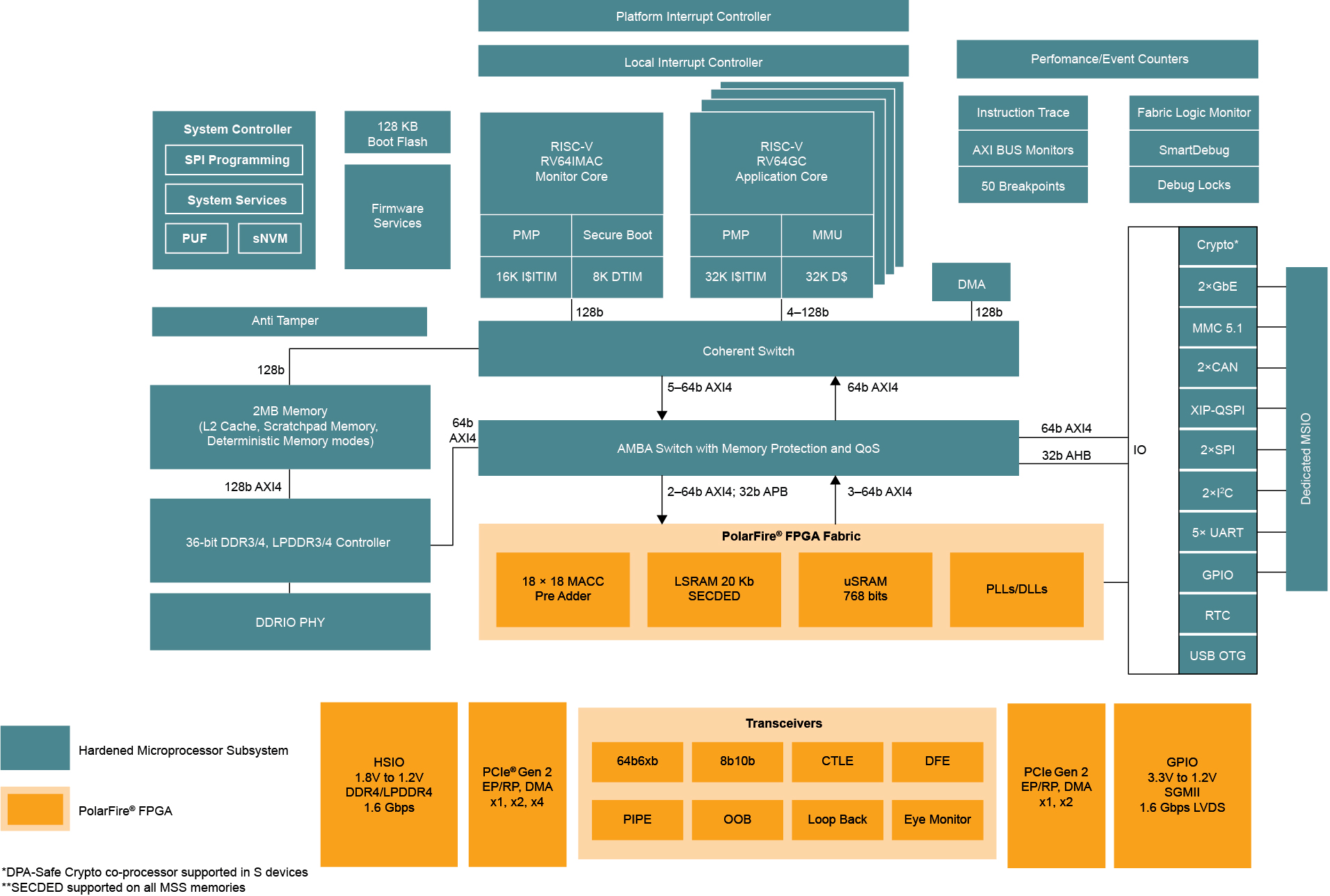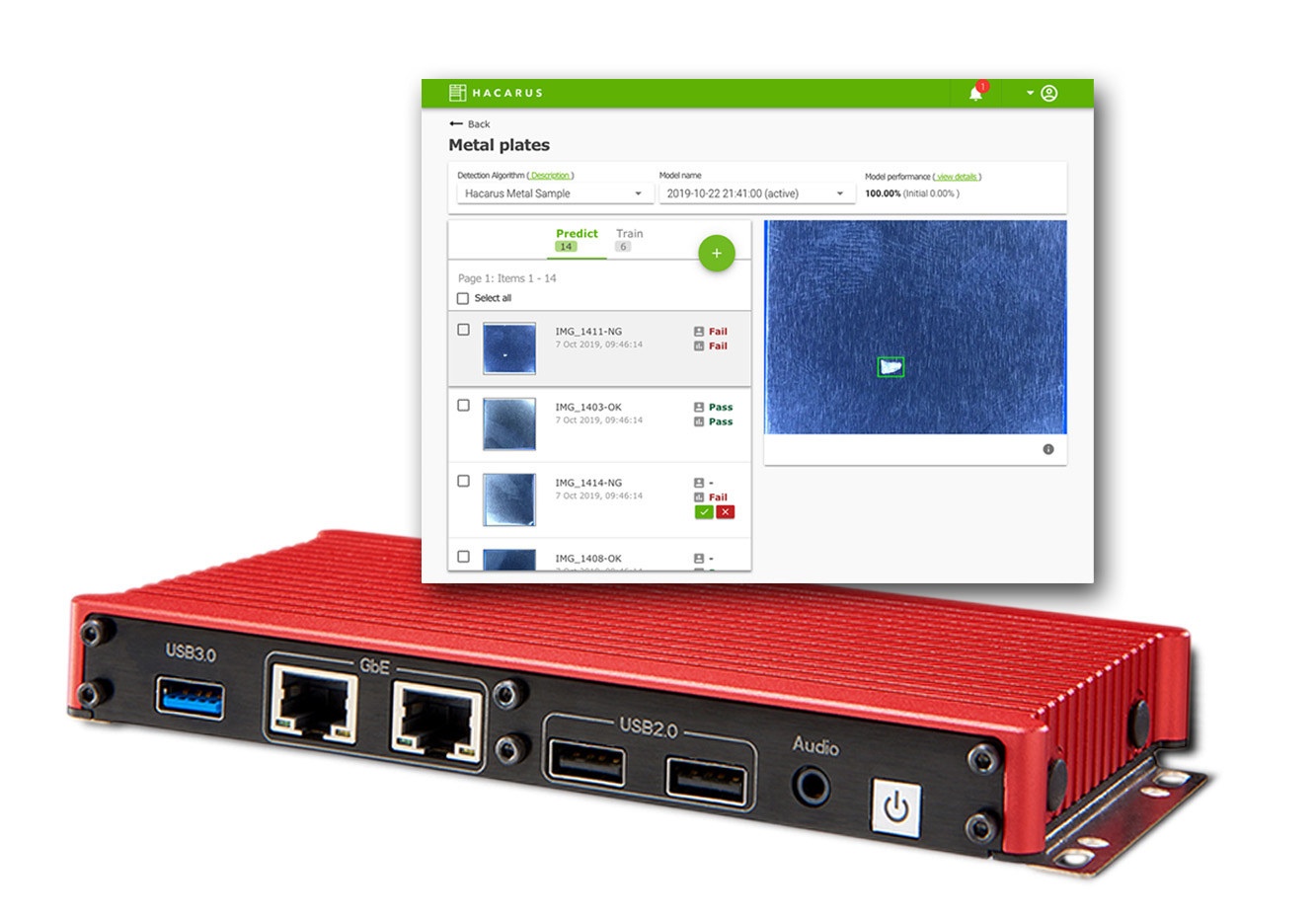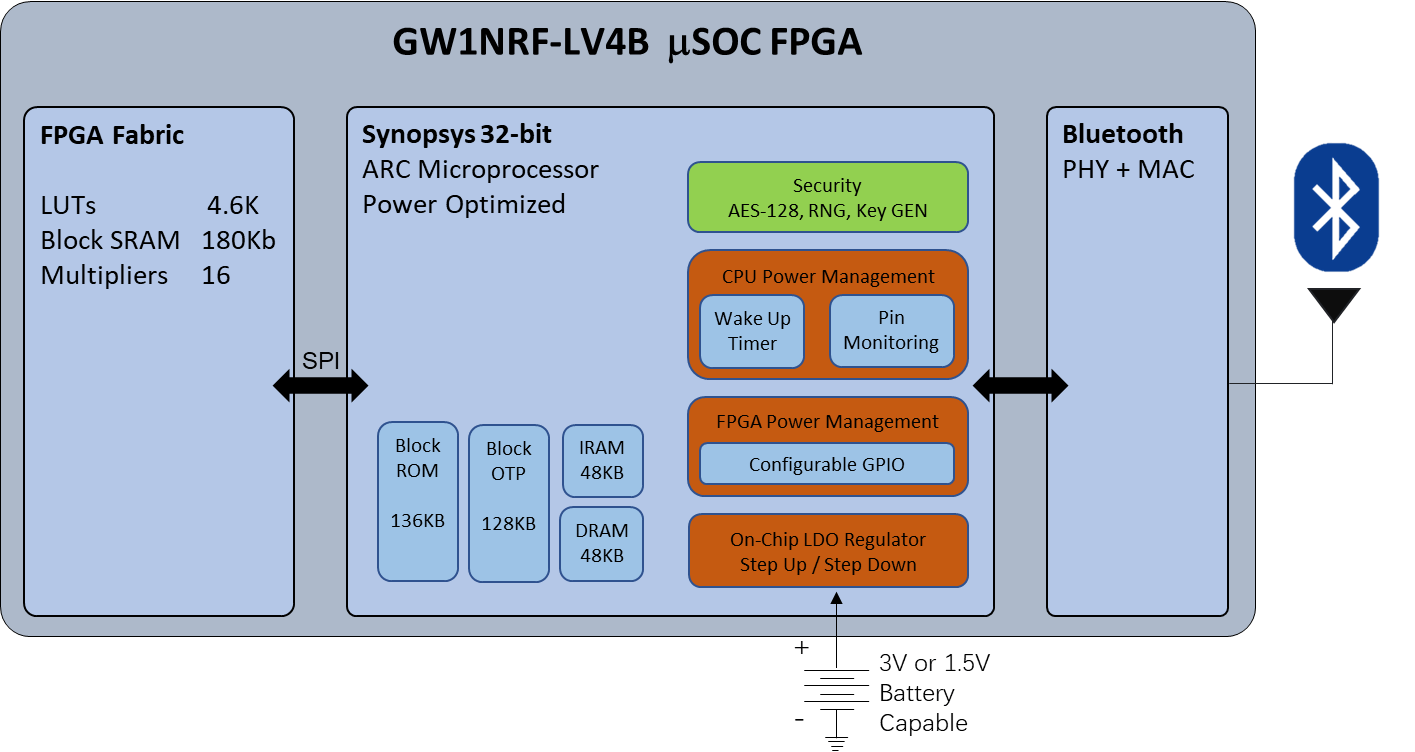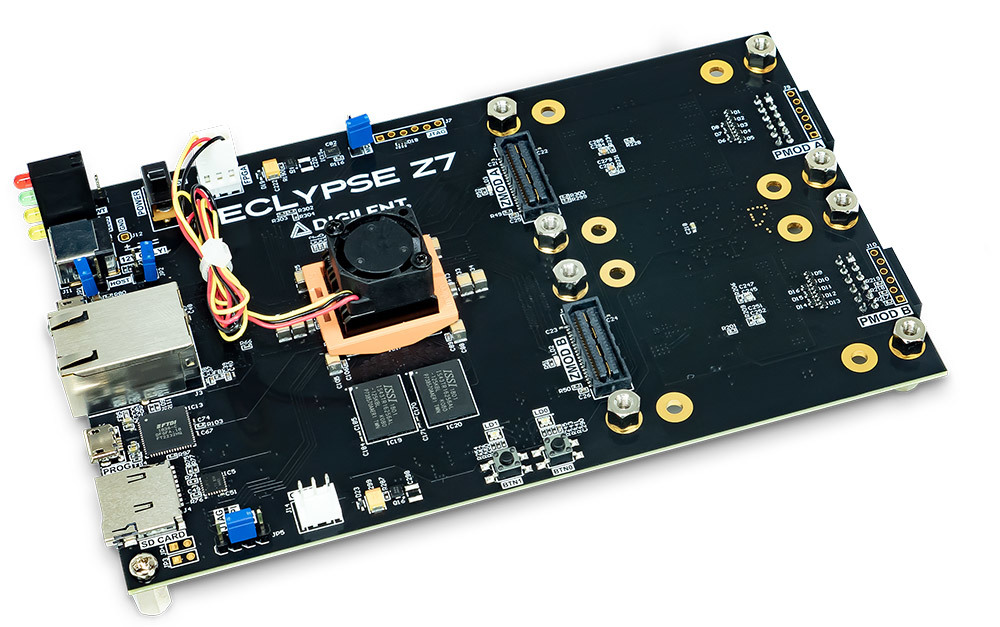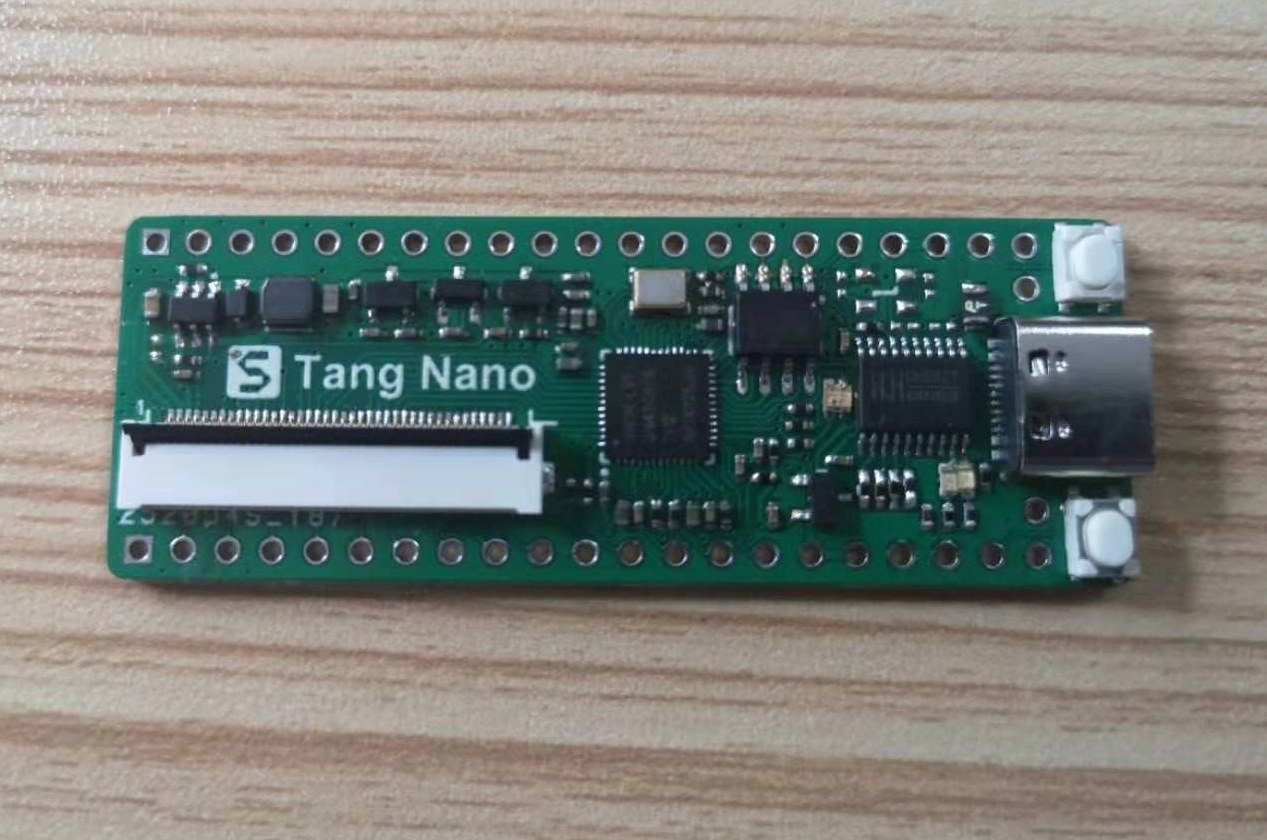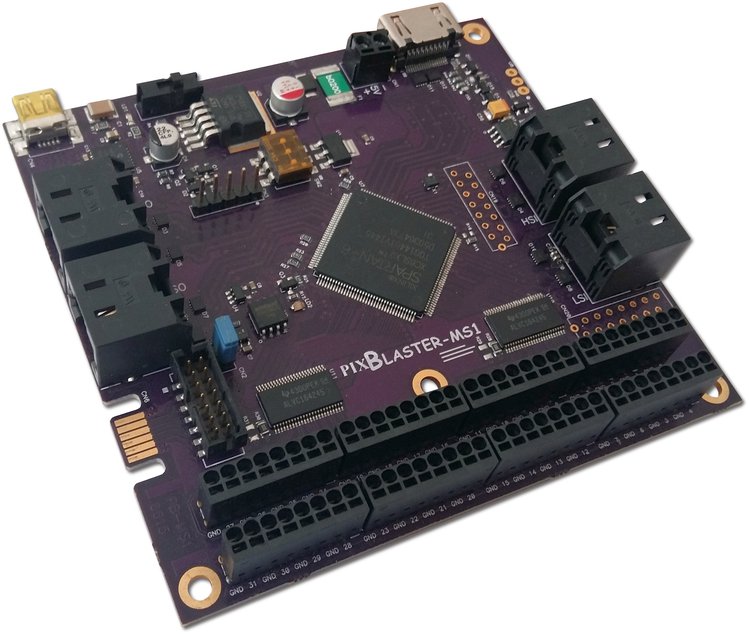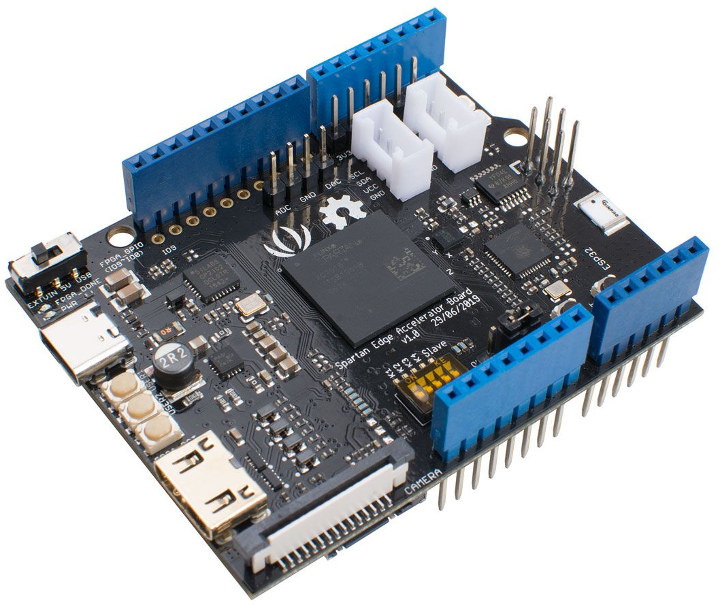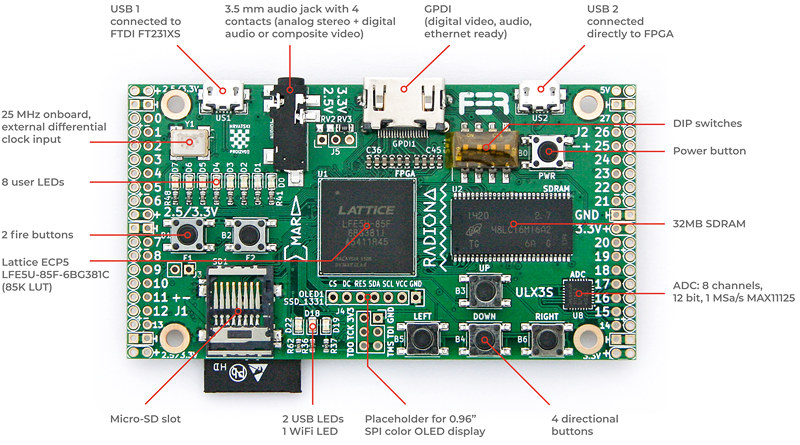Microsemi unveiled PolarFire FPGA + RISC-V SoC about one year ago, but at the time, development was done on a $3,000 platform with SiFive U54 powered HiFive Unleashed board combined with an FPGA add-on board from Microsemi. I’ve now been informed that Microchip has announced its Linux-capable PolarFire FPGA+RISC-V SoC would start shipping in Q3 2020 at the RISC-V summit and that a development kit will be sold for a few hundred dollars. PolarFire SoC FPGA PolarFire SoC FPGA key features and specifications: Mid-Range FPGA optimized for Low Power High-speed serial connectivity with built-in multi-gigabit/multi-protocol transceivers from 250 Mbps to 12.7 Gbps Up to 461k logic elements consisting of a 4-input Look-Up Table (LUT) with a fracture-able D-type flip-flop Up to 31.6 Mb of RAM Power optimized transceivers Up to 1420 18 × 18 multiply-accumulate blocks with hardened pre-adders Integrated dual PCIe for up to ×4 Gen 2 Endpoint […]
Hacarus Embedded AI Computing Kit Leverages Sparse Modeling Technology
AI training often requires thousands of samples to become accurate, and it can be costly and time-consuming, for example, if you want to train a model to detect manufacturing defects you’d need to provide images with both defective samples and good samples. Japanese AI experts at Hacarus have been working on a solution called Sparse Modeling which requires about 50 samples or even less for training, and worked with Congatec to provides an embedded AI computing kit leveraging the technology. Sparse Modeling Technology Hacarus does not go into great detail but explains Sparse Modeling technology is using a data modeling approach that focuses on identifying unique characteristics, in a way that humans recognize friends and family without having to look at everything from feet to head. That means algorithms based on Sparse Modeling do not need as much data as traditional AI solutions, leading to much smaller AI footprint suitable […]
GOWIN GW1NRF FPGA Comes with Bluetooth 5.0 LE Radio & 32-bit ARC MCU
I first heard about GOWIN Semiconductor last month when I found out about Sipeed Tang Nano FPGA board going for $5 and featuring GOWIN GW1N FPGA. The company has now announced what it claims is the first Bluetooth FPGA on the market with GW1NRF FPGA integrating a Bluetooth 5.0 LE radio and a 32-bit ARC microcontroller beside FPGA fabric. GOWIN GW1NRF-LV4N uSoC FPGA key features and specifications: FPGA Fabric – 4.6K LUTs, 180 Kb block SRAM, and 16 multipliers MCU – 32-bit ARC microcontroller with 48KB IRAM, 48KB DRAM 136KB block ROM, 128KB block OTG Security – AES-128, RNG, Key GEN Power Management – Wake-up timer, pin monitoring Wireless – Bluetooth LE (Low Energy) 5.0 Transceiver with PHY & MAC Power Supply – 3V or 1.5 V with battery support via on-chip LDO regulator and step-up/step-down DCDC regular Power Consumption – 5nA power disable mode Package – 6x6mm QFN48 package […]
Digilent Offers 2 Zynq-Based Linux Development Boards Supporting SYZYGY Expansion
Digilent Announces SYZYGY high-speed SBCs Digilent has announced two new SBCs that are ultra-high-speed and built to be more modular than its other boards. The company, which has a great deal of experience in Pmod lower speed FPGA standards has now entered the open-source, SYZYGY high-speed standards with its Eclypse Z7 and the Genesys ZU development SBCs. Background on the Digilent Zybo FPGA SoC SBC We reported on the Zybo development board FPGA SoC from Digilent and that seems to have lead to the latest format for the Eclypse Z7. Zmod There is also a release planned for the new Zmod modules, built to work with both the Eclypse Z7 and the Genesys ZU as SYZYGY compliant expansion modules. Opal Kelly and Zmod expansion The Zmods are Opal Kelly module standard, called SYZYGY, first seen in the Opal Kelly SYZYGY Brain-1 SBC. The standard was developed to jump the gap […]
$5 Tang Nano FPGA Board Features GOWIN GW1N “LittleBee” FPGA
Last year, we wrote about Lichee Tang FPGA board powered by Anlogic EG4S20 FPGA and targeting RISC-V development for just under $15. The company, now called Sipeed, has made an even cheaper FPGA board with Tang Nano equipped with GOWIN Semi GW1N FPGA part of the company’s LittleBee family. Sipeed Tang Nano Sipeed Tang Nano specifications: FPGA – Gowin GW1N-1-LV FPGA with 1,152 LUT4, 864 Flip-Flops(FF), 72Kbit Block SRAM, 4x B-SRAM, 96Kbit user flash, 1x PLL, 4x I/O banks System Memory – 64Mbit (8MB) 3.3V PSRAM Display – Standard 40-pin RGB LCD interface with on-board screen backlight driver circuit (default normally open, EN pin can be connected to FPGA) USB – USB Type-C port for download and power supply Expansion – 34 I/O ports and power pins on headers (unpopulated), breadboard-compatible Misc – RGB LED, 2x user buttons, 24MHz crystal oscillator Power Supply – 5V via USB-C port (at least […]
Pixblasters MS1 Video LED Controller Outputs HDMI Input to 16K+ LED Video Walls (Crowdfunding)
Pixblaster Video LED Controller Pixblasters, a company focused on LED signage and video display, have started a Crowd Supply campaign for their MS1 Video Controller. The Pixblaster MS1 controller can be attached to any laptop or computer with HDMI output (think Raspberry Pi SBC) and control 16,384 LEDs without any programming, physical modifications or soldering. Extreme Scalability The market the MS1 video controller is aimed at is small business and makers, who hadn’t before had a controller with this much scalability. The company is saying that the MS1 can be daisy-chained together to control hundreds of thousands of LEDs and act as a full video monitor across hundreds of meters of LED strips. Programming The unit can easily and with little technical knowledge connect WS212B-Based addressable LED strips together for a complex output of digital displays, even mirroring a video display in some instances. Target Users The ability to use […]
Spartan Edge Accelerator Arduino Compatible Board Combines ESP32 & Spartan-7 FPGA
Xilinx Spartan FPGAs have been around for a while, and a few years ago we covered Spartan-6 FPGA boards such as Spartixed and miniSpartan6+. Seeed Studio has now launched another Xilinx Spartan board with WiFi and Bluetooth connectivity. Spartan Edge Accelerator Board follows Arduino UNO form factor and combines a more recent Xilinx Spartan-7 FPGA with Espressif Systems ESP32 WiFi + Bluetooth chip. Spartan Edge Accelerator specifications: FPGA – Xilinx Spartan-7 XC7S15 FPGA with 12.8K Logic Cells and 360Kb block RAM WiSoC – Espressif Systems ESP32 SoC with 802.11 b/g/n 2.4GHz WiFi and Bluetooth 4.1 BLE Storage – SPI flash, MicroSD card slot Video Output – Mini HDMI Video Input – CSI Camera Interface with support for OV5640 sensor USB – USB type-C port Expansion Arduino UNO headers (5V) FPGA I/O header DAC output and ADC input header (via 8-bit ADC1173 chip) 2x Grove connectors (I2C and digital I/O) Debugging […]
ULX3S Education Board is Powered by Lattice Semi ECP5 FPGA & ESP32 WiFi/BLE Module
A few days ago, we covered the KiCAD designed OrangeCrab open-source hardware board powered by a Lattice Semi ECP5 FPGA, and compliant with Adafruit Feather form factor. It’s turned out there’s another Lattice Semi ECP5 FPGA board that’s also designed with KiCAD and open source hardware. Radiona ULX3S differs are it’s larger and exposes more I/Os since it was specifically designed to meet the meets of the digital logic course at the Faculty of Electrical Engineering and Computing (FER) of the University of Zagreb in Croatia. ULX3S specifications: FPGA – Lattice ECP5 LFE5U-85F-6BG381C with 84K LUT System Memory – 32MB SDRAM @ 166 MHz Storage – 4–16MB Quad-SPI Flash for FPGA config and user data storage; MicroSD slot Audio – 3.5 mm jack with 4 contacts (analog stereo + digital audio or composite video) Video – Digital video (GPDI General-Purpose Diferential Interface) with 3.3V-5V I2C bidirectional level shifter Display – […]


